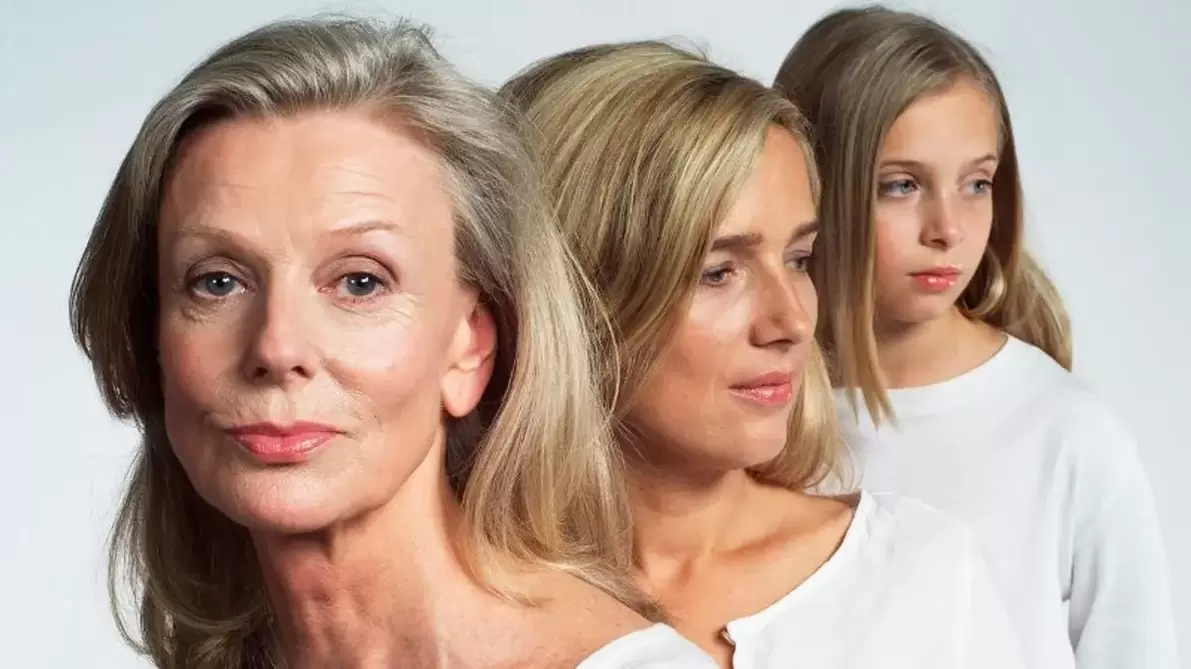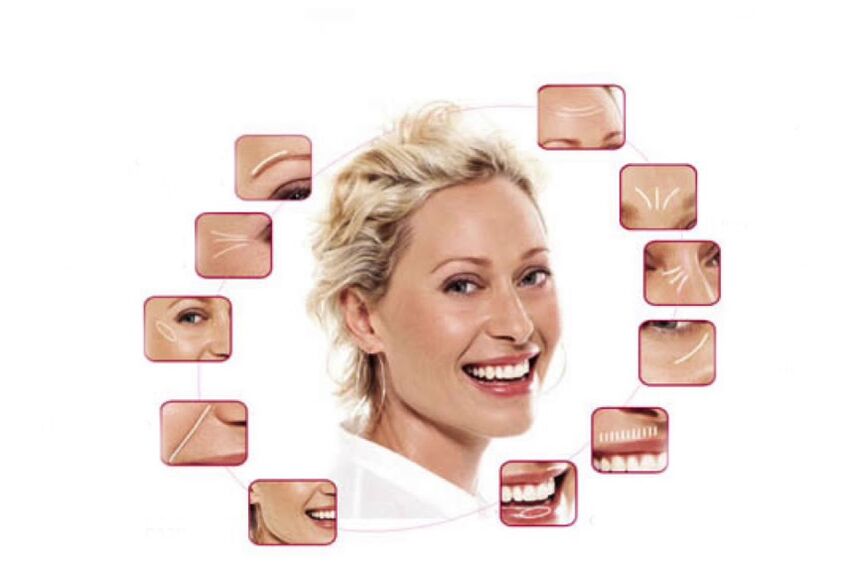
Delaying the aging process of the skin is the ultimate problem of cosmetology. Until recently, it was thought that the skin began to age until the age of 40, when the first pronounced wrinkles appeared. And cosmetics fight mainly wrinkles. It is now quite obvious that the aging process of the skin begins long before the appearance of visible signs and begins at the cellular level for about thirty years. Currently, researchers have a large amount of biomedical scientific knowledge about the structure and functioning of the skin, oxidative stress and its causes, intracellular mechanisms of adaptation and recovery, the quality and intensity of intercellular interactions.
Accepted for today,that skin aging does not refer only to visible signs: wrinkles, uneven pigmentation, gravitational sagging of the skin, dryness, etc. First of all, these are cellular and tissue signs of skin aging, changes in the subtle processes occurring inepidermis and dermis.
The mechanisms of aging affect the most important cellular organelles:
- DNA- the most important element for storage and application of hereditary information;
- mitochondria- a unique organelle that provides the cell with energy and ensures its survival in difficult conditions;
- cell membrane- regulator of external signal transmission and selective permeability of substances.
With each external impact on the skin, complex processes are started in the skin cells - they exchange information and coordinate a joint response to external challenges. These processes are very active in youth. But with age they disappear, there is a certain imbalance of internal processes and the skin begins to age. This raises the question of how to help the skin effectively resist aging at a young, mature and advanced age.
All theories describing the mechanisms of skin aging, and there are more than 300, can be divided into two major groups - aging based on internal (endogenous) and external (exogenous) factors. Endogenous aging is caused by information encoded in our DNA and there is still no way to influence this aspect. Exogenous aging is the overall result of the cumulative effect of aggressive environmental factors, including ultraviolet and infrared radiation, urban smog ozone, cigarette smoke and more. A noticeable change in the study of aging processes by external factors occurred in the early 20th and 21st centuries. Now no one doubts the fact that external factors determine 60-80% of the total volume of aging (data on facial skin). Ultraviolet is recognized as the most dangerous.
Signs of skin aging in numbers
Age-related changes usually appear externally and signs of skin aging can be seen. Here is a list of the most common skin changes and their appearance. Research in recent years has made it possible to calculate in cash many of the aging processes.
- The collagen content in the dermis, which is necessary to ensure the strength of the skin, decreases by 1% every year after the age of 30.
- After 40 years, the skin thins by 1% per year.
- The skin cell repairs 10-100 thousand mutations in DNA in one day, and 2 hours of sun exposure provide up to 1 million mutations.
- 15 minutes of sun exposure depletes the skin's own reserves of antioxidants (mainly vitamins C and E) by 70-90%, which requires at least 2 hours to recover.
- Of all the proteins that are synthesized in the cell, 40% are produced by mistake - it requires continuous operation of cellular mechanisms for its utilization and processing.
- In total, the body contains about 15 g of hyaluronic acid and of which 10 g fall on the skin. Complete renewal of all hyaluronic acid occurs in the body for three (! ) Days - any failure of the skin cells for the synthesis of hyaluronic acid turns into a micro-catastrophe for the skin.
- Reduced elasticity of the stratum corneum and epidermis. With age, the stratum corneum becomes thicker, and the upper layer, on the contrary, becomes thinner (from 30 to 70 years - twice). The hardness of the skin decreases and the skin becomes dull.
- Reduce the amount of water in the stratum corneum. With age, the amount of water in the skin changes: 75-70% to 25 years of age to 63-65% in adults. The skin becomes dry, less dense and the sensitivity of the skin increases.
- Increased skin pigmentation. Over time, due to the negative effects of the sun, age spots appear on the skin.
- With age, the activity of the sebaceous glands decreases. As a result, the skin becomes drier and more vulnerable to free radicals.

The main cause of skin aging is a decrease in the speed of recovery
All skin functions and regenerative processes are preserved in humans even in extreme old age. The problem is that their speed is slowing down. If the young skin is able to react to a negative impulse and stop its adverse effects for 12 hours, then the older skin already needs 30 hours. Thus, it is obvious that in an adult the recovery process is extremely slow. That is, the intact skin of a young and old person is equally effective as a barrier and protection. The differences become sharply noticeable when the skin is damaged and the need to restore the destroyed structures and mechanisms. Given that our skin is in a state of constant aggression of external factors, then the older the age, the more intense the snowball of "untreated" destruction and damage. That is, mature skin does not have time to copewith the damage and they accumulate and appear as external signs of aging. That is, all signs of aging are "untreated" skin lesions.
Stages of age-related changes in skin and characteristics of care
Young skin is differenthigh content of own "molecules of youth", high intensity of recovery processes. Young skin is much denser than mature, it is more elastic, its structural fibers, collagen and elastin, are arranged. The rate of cell renewal is approximately 28 days. The first age-related skin changes begin to appear at the age of 25. That is why the main emphasis in cosmetics of this age group is protection and prevention. Includes protection from ultraviolet radiation, maintaining water and lipid balance in the skin, mandatory use of various antioxidants.
Mature skin is differentreducing the content of "youth molecules" and slowing down the recovery process. Daily stress becomes more traumatic and destructive to the skin. Signs of skin aging begin to appear externally in the form of wrinkles, crow's feet around the eyes, sagging skin on the cheekbones and chin. Here, anti-aging cosmetics must provide not only protection but also support for their own processes (protective and supportive cosmetics). Topical is the use of substances to maintain cell life (protection of cell membranes, DNA and mitochondria), enhancing the synthesis of collagen, elastin and hyaluronic acid. It is necessary to enhance and maintain a high intensity of intercellular communication with the help of regulatory peptides and growth factors.
In old age,huge shortage of recovery mechanisms. The rate of skin cell renewal after 55 years is significantly reduced and is now 3-4 months (28 days before 25 years of age). This happens against an unfavorable background of already accumulated "untreated" injuries. The signs of skin aging become more pronounced - the number and depth of wrinkles increase, the skin becomes drier and duller. Anti-aging cosmetics at this age is protection, Active substances from both age groups and their own - bioflavonoids with phytoestrogenic activity (to replace the level of their own estrogens), cholesterol in a special ratio with ceramides and fatty acids to replenishlipid barrier, intradermal moisturizers, anti-inflammatory and vascular stabilizing components.
Each of us is different. However, the processes that take place in our skin are set by nature in the same way for everyone. Including the aging process of the skin. At each age the degree of manifestation of certain changes is different. Take a closer look. You may notice some changes today. So, it's time to act! It is important to choose beauty care products according to the age and needs of the skin at every stage of life.
Skin care products and specialized treatments will help you slow down the aging process of your skin and keep your skin youthful for years to come. With the abundance of cosmetics and procedures today, women of all ages can choose the right anti-aging products for themselves.














